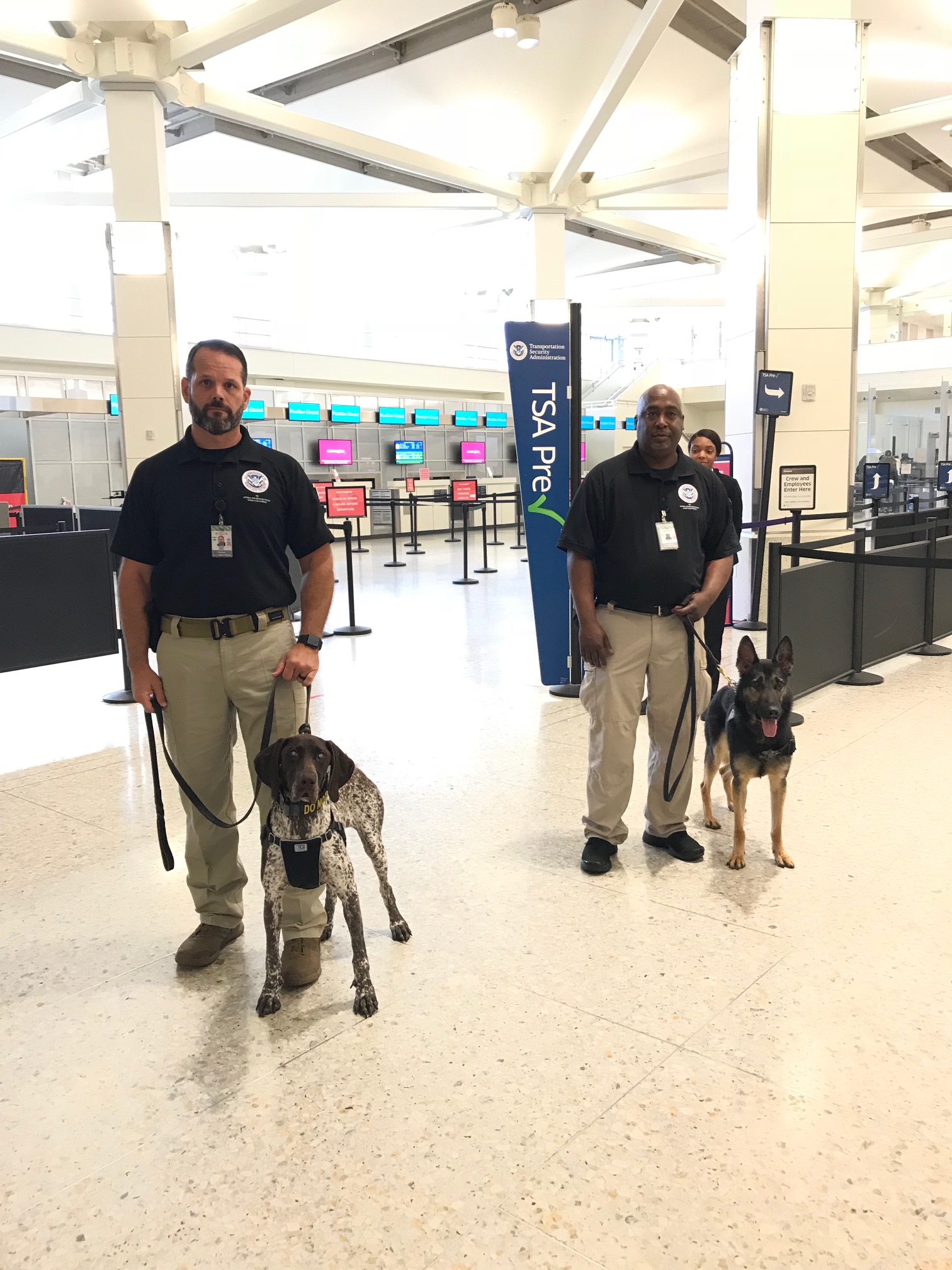
TSA’s use of Passenger Screening Canines (PSCs), which started recently at OAK, will enhance security while assisting in the efficiency of screening operations. PSCs are trained to work in a busy transportation environment, using their keen sense of smell when working in and around travelers and their belongings.
“TSA is thrilled to add PSCs to our security operations at Oakland International Airport,” said David Von Damm, TSA federal security director at OAK. “We are committed to providing the best security and a positive passenger experience for our Oakland travelers throughout the security process. Our partners at the Alameda County Sheriff’s Office and the Port of Oakland are some of the best in the business.”
“We are very pleased that TSA has introduced the use of Passenger Screening Canines in Oakland to further enhance the detection of explosives,” said Port of Oakland Director of Aviation Bryant L. Francis. “We could not be more pleased with the work that our local TSA team and our security partners do here. The airport is gaining in popularity and is becoming a more popular and highly utilized air transportation center. TSA has done a fine job of ensuring that our safety and security profile remain at the forefront of our collective mission.”
Passengers departing OAK can expect to see PSCs and their handlers working in the security checkpoint. In addition, travelers will see the ACSO canines and their handlers working in other areas of the airport.
Canines are tethered to their handlers and may be seen working in close proximity to passengers at the airport. A handler is trained to read the dog’s behavior when it identifies a potential threat. If a dog alerts its handler to something suspicious, there is an established procedure in place to resolve the alarm.
TSA uses layers of security – both seen and unseen by the public – in coordination with airport security operations to protect passengers and the nation’s transportation system. These specially trained canines are an effective tool in detecting concealed explosives, which are known to be the greatest threat to the aviation system.
Explosive detection canine teams, which include a handler and a canine, have been through 10-12 weeks of intensive training at Lackland Air Force Base in San Antonio. Teams are regularly tested and are required to go through a rigorous annual recertification to demonstrate effectiveness and continued proficiency.
Working canines should not be petted or fed by anyone except their handlers. Nationwide, TSA has more than 1,000 explosive detection canine teams working at airports, mass transit facilities and maritime locations.
